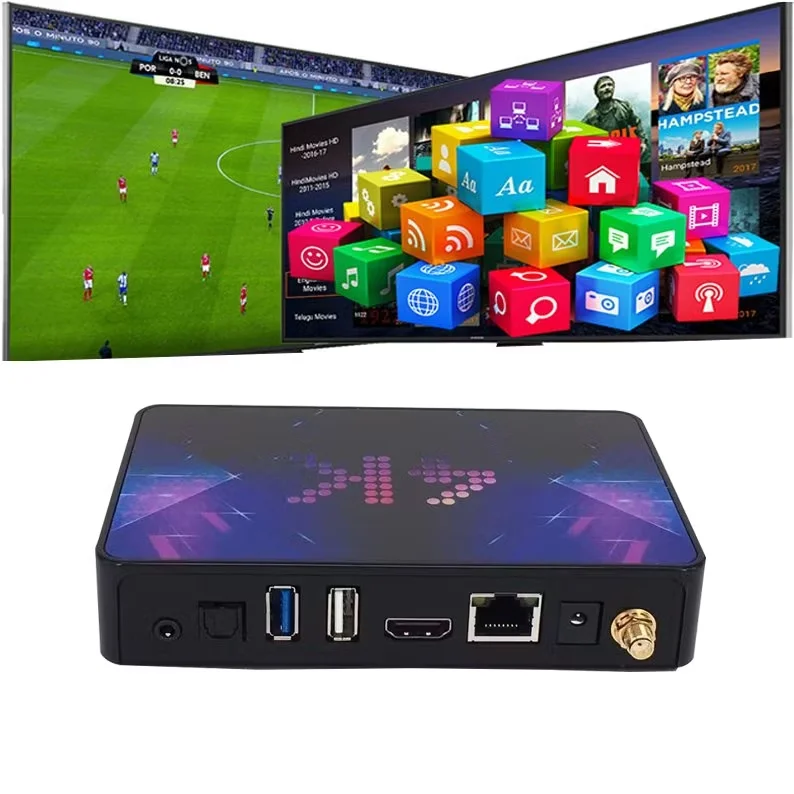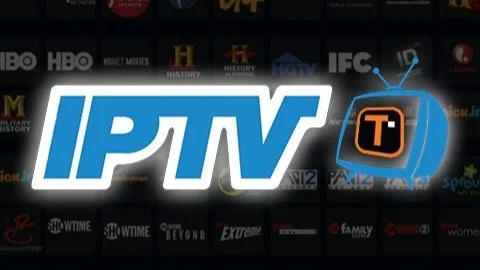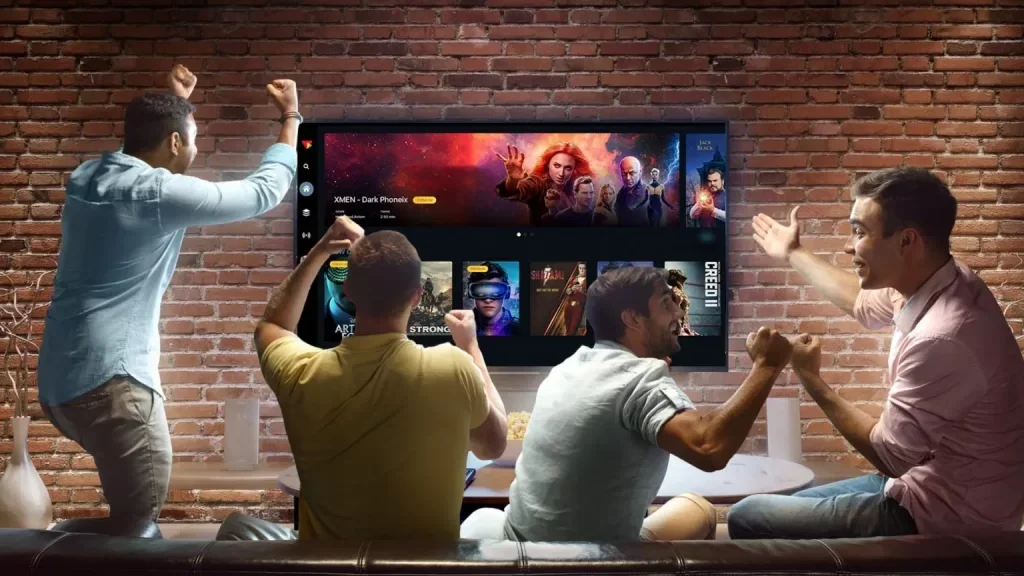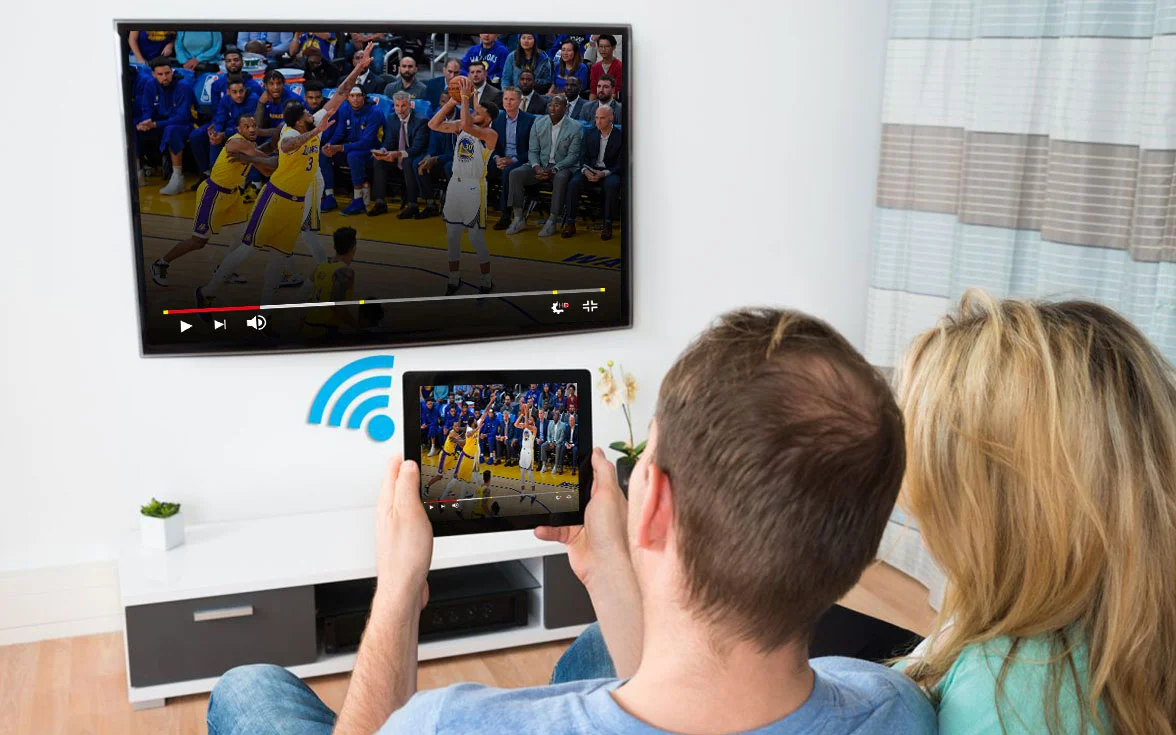What Exactly is Multi-Connection IPTV?
So, you’ve heard about IPTV, right? Internet Protocol Television – it’s that nifty technology letting you stream TV channels over your internet connection instead of traditional cable or satellite. It opens up a world of content, often with thousands of channels from across the globe, plus movies and series on demand. But what happens when more than one person in your house wants to watch different things at the same time? That’s where multi-connection IPTV steps in. Think about your standard IPTV subscription. Often, the basic plans come with a single connection limit. This means only one device can be actively streaming the service at any given moment. If someone is watching a football match in the living room on the smart TV, and someone else tries to watch a movie on a tablet in their bedroom using the same account, the first stream might stop, or the second person won’t be able to connect. It can be frustrating, especially in busy households.
Multi-connection IPTV directly addresses this limitation. How does it work? Essentially, an IPTV service provider offering multi-connection plans allows you to purchase a subscription that permits simultaneous streaming on a specified number of devices. Instead of just one active stream, you might get options for two connections, three, four, or even five connections, all under a single account and subscription fee. This means multiple people can enjoy their preferred content on different screens throughout the home without interrupting each other. It’s designed for flexibility and shared entertainment experiences. Is it just about avoiding arguments over the remote? Partly, yes, but it’s fundamentally about adapting the IPTV experience to modern viewing habits where individuals often prefer watching content on personal devices or different TVs simultaneously. Providers like Channels4Cheap understand this need and offer various IPTV plans tailored to different household sizes and viewing requirements. Understanding this core concept is the first step to unlocking a more versatile and convenient streaming setup for everyone under your roof.

The beauty of this system lies in its simplicity from the user’s perspective. You don’t need multiple complex accounts or separate bills. You manage one subscription, and the provider handles the backend allowance for simultaneous streams. This contrasts significantly with some traditional services where adding extra boxes or access points incurs substantial extra costs and installation hassles. With multi-connection IPTV, it’s often just a matter of selecting the right plan during signup or upgrading your existing one. Consider it an investment in household peace and viewing freedom. If your current cheap IPTV subscription only allows one stream, exploring IPTV with multiple connections could dramatically improve your experience, especially during peak viewing times like evenings or weekends. It aligns perfectly with the trend of personalized entertainment consumption within a shared living space.
Why Would You Need Multiple IPTV Connections?
It might seem like a luxury at first glance, but the need for multiple IPTV connections often arises from very practical, everyday situations. Let’s ask a simple question: Does everyone in your home always want to watch the same thing at the same time? Probably not. Consider a typical family scenario. Dad might want to catch the live sports event on the main TV, Mom might prefer watching a cooking show on the kitchen tablet, and the kids might want cartoons or a movie on another TV or their own devices. With a single-connection plan, this scenario leads to conflicts or someone having to compromise. A multi-connection plan, however, allows each person to stream their desired content concurrently. It transforms the IPTV service from a single-screen experience into a household entertainment hub.
Roommates sharing an apartment face similar challenges. If multiple people chip in for an affordable IPTV subscription, it’s only fair that they can use it when they want to, regardless of whether a housemate is already streaming. A plan with 3 connections or 4 connections ensures everyone gets value from the shared subscription without stepping on each other’s toes. It eliminates the awkward “Hey, are you using the IPTV?” messages or finding yourself blocked from watching because someone else logged in first. Even for individuals living alone, multiple connections can be beneficial. You might start watching a movie on your living room TV, pause it, and then want to continue watching on your tablet in bed. Or perhaps you want to have a sports game streaming on one screen while browsing channels or watching something else on another. The flexibility offered by multi-connection IPTV caters to these multi-tasking viewing habits.

Furthermore, the proliferation of smart devices means the average household has numerous screens capable of streaming content – Smart TVs, smartphones, tablets, laptops, and streaming devices like the Amazon Firestick. Why limit your high-quality IPTV subscription to just one of these at a time? Leveraging a multi-connection plan allows you to fully utilize the technology you already own, making your entertainment truly accessible across your personal ecosystem. It’s about maximizing convenience and ensuring your investment in an IPTV service cheap plan actually meets the demands of your modern, multi-screen lifestyle. Ultimately, the question isn’t just “Why would you need multiple connections?” but rather, “Given how we consume media today, how could you manage without them?” for many households. Exploring options like those on IPTV4Cheap can reveal just how affordable this convenience can be.
How Does Multi-Device Streaming Work with IPTV?
So, how does the magic happen behind the scenes? How can one IPTV account power streams on multiple devices simultaneously? It’s simpler than you might think. When you subscribe to a multi-connection plan, your provider essentially authorizes your account credentials (like a username and password, or an M3U playlist URL/Xtream Codes login) to establish a set number of concurrent connections to their servers. Think of it like having multiple keys to the same streaming library. Each device you log into uses one of these ‘keys’ to access the content stream.
Let’s say you have a plan with three connections. You can install an IPTV player app, such as the popular IPTV Smarters Pro or perhaps MegaOTT, on your living room’s Fire TV Stick, your bedroom’s Smart TV, and your smartphone. You’d log in using your credentials on each device. As long as no more than three devices are actively streaming content *at the exact same time*, everything works smoothly. The provider’s system keeps track of the active connections linked to your account. If a fourth device tries to connect while the first three are streaming, it will typically be blocked, or sometimes, the oldest active stream might be disconnected to make way for the new one (this behavior can vary by provider). Device compatibility is generally broad. Most IPTV services work well across a range of platforms:
- Smart TVs (Samsung, LG, etc.)
- Android TV Boxes
- Amazon Fire TV devices (Firestick, Fire Cube)
- Smartphones and Tablets (Android & iOS)
- Computers (using VLC player or dedicated apps)
You just need to install a compatible IPTV player app on each device you intend to use. Guides like how to install IPTV Smarters Pro on Firestick make this process straightforward.

A crucial factor often overlooked is internet bandwidth. While the IPTV service allows multiple connections, your home internet needs to be robust enough to handle the simultaneous data streams. Each stream, especially if it’s HD or 4K, consumes bandwidth. Streaming on three or four devices at once requires a stable and reasonably fast internet connection to avoid buffering and maintain picture quality across all screens. Before upgrading to a higher connection plan, it’s wise to check your current internet speed and consider if it can support the increased load. Most modern broadband connections should be sufficient, but it’s something to keep in mind. The IPTV provider manages the connection permissions, but the quality of the final stream delivered to each screen relies heavily on your local network and internet capacity. Understanding this relationship helps ensure a smooth multi-device streaming experience.
Choosing the Right Multi-Connection IPTV Plan
Okay, you’re convinced that multi-connection IPTV is the way to go. But how do you pick the perfect plan? With various providers and options available, making the right choice requires a little thought. The first, and most obvious, question to ask yourself is: How many simultaneous streams do we actually need? Count the maximum number of people likely to be watching IPTV on different devices at the same time in your household. Is it usually just two? Or does your family often have three or four screens going at once during peak hours? Be realistic. Opting for a 5-connection plan when you rarely exceed two simultaneous streams might be overkill and unnecessarily expensive. Conversely, underestimating your needs and choosing a 2-connection plan when you frequently need three will lead to the same frustrations you’re trying to avoid.
Next, consider the overall package offered with the multi-connection plan. Don’t just focus on the number of connections. Look at the channel list – does it include the specific networks, sports packages, or international channels you care about? Check the Video on Demand (VOD) library – is it extensive and regularly updated? What about stream quality options (SD, HD, FHD, 4K)? A cheap IPTV service might offer multiple connections, but if the channel lineup is poor or the streams are unreliable, it’s not a good value. Compare the offerings of different cheap IPTV providers. Sometimes, paying slightly more grants access to a much better overall service and more stable streams. Also, investigate the provider’s reputation for reliability and customer service.

Price is, of course, a major factor. Compare the IPTV price points for different connection tiers. Generally, the cost per connection decreases as you add more connections. For example, a 4-connection plan usually costs less than buying four separate single-connection plans. Calculate the value proposition for your specific needs. Explore different subscription lengths; yearly subscriptions often offer the best monthly rate, but starting with a one-month IPTV subscription allows you to test the service and ensure it meets your multi-connection requirements before committing long-term. Look for IPTV subscription deals or special offers. Many providers, including IPTV4Cheap, have dedicated pages outlining their multi-connection options and prices. Carefully weigh the number of connections, channel/VOD content, service quality, and cost to find the plan that strikes the right balance for your household’s entertainment needs. Don’t hesitate to buy IPTV channels through a plan that truly fits.
Setting Up Your Multi-Connection IPTV Service
You’ve chosen your ideal multi-connection plan – congratulations! Now, how do you get it up and running on all your devices? Is the setup process significantly more complicated than for a single connection? The good news is: generally, no. The setup procedure for each device using a multi-connection subscription is typically identical to setting up a single-connection plan. The key difference lies in the permissions granted by your provider on the backend, allowing those credentials to work simultaneously on multiple devices up to your plan’s limit. You’ll receive your login details from your IPTV subscription provider after purchase – this usually includes a username, password, and a server URL (often referred to as the portal URL or M3U playlist URL).
The most common method involves using an IPTV player application. Apps like IPTV Smarters Pro, TiviMate, Perfect Player, or provider-specific apps like MegaOTT APK are popular choices. Let’s take IPTV Smarters as an example, particularly on a device like the Amazon Firestick.
- Install the App: You’ll first need to get the app onto your device. For Firestick, this often involves using the Downloader app and entering a specific URL or code (like a Downloader code for IPTV Smarters) to download the IPTV Smarters Pro APK. Detailed guides like Install IPTV Smarters Pro on Firestick provide step-by-step instructions.
- Launch and Login: Once installed, open the IPTV Smarters app. It will usually ask you to accept terms and then present login options. The most common methods are ‘Login with Xtream Codes API’ or ‘Load Your Playlist or File/URL’.
- Enter Credentials: If using Xtream Codes (often recommended for ease of use), you’ll enter any name for the playlist, your username, your password, and the server URL provided by your IPTV service. If using an M3U URL, you’ll select that option and paste the M3U link provided.
- Load Channels: The app will then connect to the server and download the channel list, VOD content, and Electronic Program Guide (EPG). This might take a few moments.
You simply repeat this process on each device you want to use for streaming, up to the connection limit of your plan. So, if you have a 4-connection plan, you can perform this setup on four different devices (e.g., two Firesticks, one Android phone, one Smart TV using an app like IPTV Smarters Pro installieren). The process remains the same for each instance.

Some providers might offer alternative setup methods or have their own dedicated applications, but the core principle of entering your unique credentials into a player app remains consistent. Always refer to the specific setup guide or instructions provided by your chosen IPTV service, like those available from IPTV4Cheap, as they may have specific recommendations or URLs. The critical takeaway is that multi-connection doesn’t mean multi-complexity in setup; it just means repeating the standard setup on more devices. Ensure you have your credentials handy and follow the app instructions, and you’ll have multiple screens streaming your favorite content in no time. Utilizing resources like a comprehensive IPTV guide can also smooth out the process.
Managing Your Devices and Connections
Once you have your multi-connection IPTV service set up across various devices, effective management becomes key to a smooth experience. A common question arises: how do I know which devices are currently using up my connections? Unfortunately, not all best cheap IPTV service providers offer a user-facing dashboard that shows active connections in real-time. In many cases, you’ll need to rely on manual tracking within your household. Communicating who is watching and on which device can help prevent accidentally exceeding the limit. Some premium player apps might offer features to manage devices linked to the app itself, but tracking server-side connections usually falls to the provider.
What happens if you do try to connect more devices than your plan allows? As mentioned earlier, the system needs to manage this overflow. Most commonly, one of two things will occur:
- The newest device attempting to connect will simply fail to load the stream, possibly showing an error message like “connection limit reached” or just failing to play.
- Alternatively, the system might automatically disconnect the oldest active stream to allow the newest one to connect. This can be disruptive if someone was in the middle of watching something important.
Understanding how your specific provider handles exceeding the connection limit is helpful. This information might be available in their FAQ or by contacting customer service. To avoid these issues, establishing clear ‘house rules’ for usage, especially during peak times, can be beneficial if you frequently approach your connection limit. If you consistently find yourself needing more connections than your plan allows, it might be time to consider upgrading to a plan with a higher limit, such as moving from 3 connections to 4 connections or even 5 connections.

Sharing credentials within the household is inherent to multi-connection plans, but it’s crucial to do so responsibly. Avoid sharing your login details outside your immediate household, as this not only violates the terms of service for most providers but also increases the risk of hitting your connection limit unexpectedly. Furthermore, keep your credentials secure. Another potential issue relates back to internet bandwidth. Even if you have enough connections allowed by your plan, trying to stream high-definition content on multiple devices simultaneously can strain your home network, leading to buffering or reduced quality on some or all screens. Ensure your internet plan is adequate for your streaming habits. If you experience persistent buffering across multiple devices when streaming simultaneously, investigate your Wi-Fi signal strength to each device and consider upgrading your internet package if necessary. Proper management involves understanding both your plan’s limits and your network’s capabilities. Providers like IPTV4Cheap aim for stable service, but local factors always play a role in the final viewing experience, especially with IPTV multiple connections active.
Is Multi-Connection IPTV Worth the Cost?
When considering any subscription service, the value proposition is paramount. Is upgrading to or choosing a multi-connection IPTV plan actually worth the extra expense compared to a basic single-connection option? For many users, particularly those in multi-person households, the answer is a resounding yes. Let’s break down why. Firstly, analyze the cost per connection. While a multi-connection plan (https iptv4cheap com iptv multi connection) has a higher total price than a single-connection plan, the cost allocated to each simultaneous stream is often significantly lower. For example, a plan offering 4 connections might cost less than double the price of a single-connection plan. If you were to purchase four separate single-connection subscriptions to achieve the same result, the total cost would likely be much higher. Therefore, from a purely economic standpoint for households needing multiple streams, these plans offer better value.
Beyond the direct cost savings compared to multiple individual plans, the primary value lies in convenience and flexibility. What is the ‘cost’ of frequent arguments over who gets to watch IPTV? What is the value of being able to watch your preferred show on your tablet while someone else enjoys a movie on the main TV without conflict? Multi-connection plans eliminate these friction points, leading to a more harmonious household entertainment environment. This enhanced user experience is often worth the modest price increase for many families and shared living situations. The ability to seamlessly switch between devices or allow multiple users access simultaneously aligns with modern media consumption patterns. Trying to juggle a single connection across multiple users and devices can quickly become frustrating and negate the enjoyment of the affordable IPTV subscription you purchased.

Furthermore, the market for cheap IPTV providers is competitive, which helps keep the pricing for multi-connection plans relatively accessible. You can often find affordable IPTV services that offer multi-connection tiers without breaking the bank. Comparing IPTV subscription pricing across different providers is key. Look for IPTV discounts or special IPTV deals, especially on longer-term plans like IPTV yearly subscriptions, which can further enhance the value. Consider the total entertainment budget; replacing expensive cable packages (which often charge hefty fees for extra boxes) with a single, cost-effective multi-connection IPTV plan can lead to significant overall savings. Ultimately, the ‘worth’ depends on your specific needs. If you live alone and only ever watch on one screen, a single connection is sufficient. But for anyone sharing their living space or utilizing multiple screens, the investment in a multi-connection plan often pays dividends in convenience, flexibility, and household peace. Exploring options to buy IPTV subscribe with multiple streams is a logical step for modern viewers.
The Future of Multi-Device Streaming and IPTV
Looking ahead, the trend towards multi-device households and personalized viewing experiences shows no signs of slowing down. IPTV, with its inherent flexibility, is well-positioned to cater to this evolution, and multi-connection plans are central to this. What can we expect in the future? We’ll likely see top IPTV providers continuing to refine their multi-connection offerings, possibly introducing even more granular tiers or more sophisticated management tools for users. Imagine a user dashboard where you can not only see which devices are connected but also remotely disconnect a stream if needed – perhaps kicking off the kids’ tablet stream when it’s dinner time directly from your phone app. Enhanced parental controls integrated with connection management could also become more common.
The technology underpinning IPTV is constantly evolving. Improvements in streaming protocols, compression techniques (like AV1 codec adoption), and server infrastructure will lead to more stable and higher-quality streams, even when multiple connections are active simultaneously on a standard home internet connection. This addresses one of the key potential bottlenecks – network congestion. As 4K and even 8K content becomes more prevalent, the ability of both the provider and the user’s internet connection to handle multiple high-bandwidth streams will be crucial. Providers like IPTV4Cheap who invest in robust infrastructure will be better equipped to deliver a seamless access IPTV with multiple simultaneous connections experience. We might also see more integration with smart home ecosystems, allowing voice commands to manage streams across different devices.

Furthermore, the types of devices used for streaming will continue to diversify. From smart glasses to integrated car entertainment systems, the demand for accessing content anywhere, anytime, will drive the need for flexible connection plans. IPTV providers might offer specialized packages tailored to mobile viewing or specific device types. The competition among cheapest IPTV providers will likely continue to focus on offering better value, including more generous multi-connection options as a key differentiator. Finding low-cost IPTV that doesn’t compromise on multi-device usability will remain a priority for consumers. For users in regions like the USA or Canada, where multiple screens per household are the norm, multi-connection IPTV isn’t just a feature; it’s becoming a fundamental requirement for a satisfactory streaming service. Choosing a reliable provider and the right IPTV plan ensures you’re ready for the present and future of home entertainment. Exploring buy IPTV subscriptions that offer this flexibility is the smart move for today’s connected viewer.